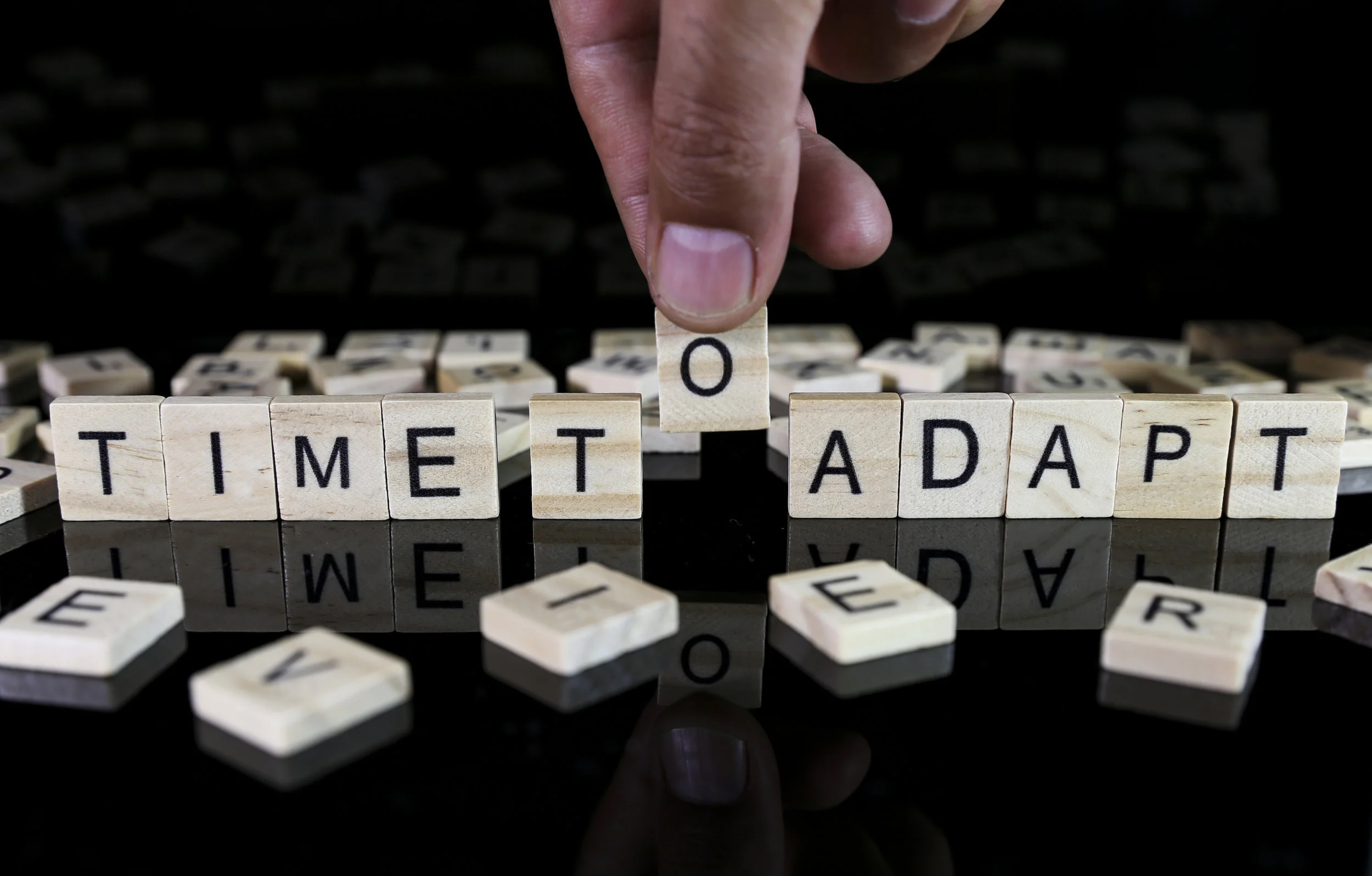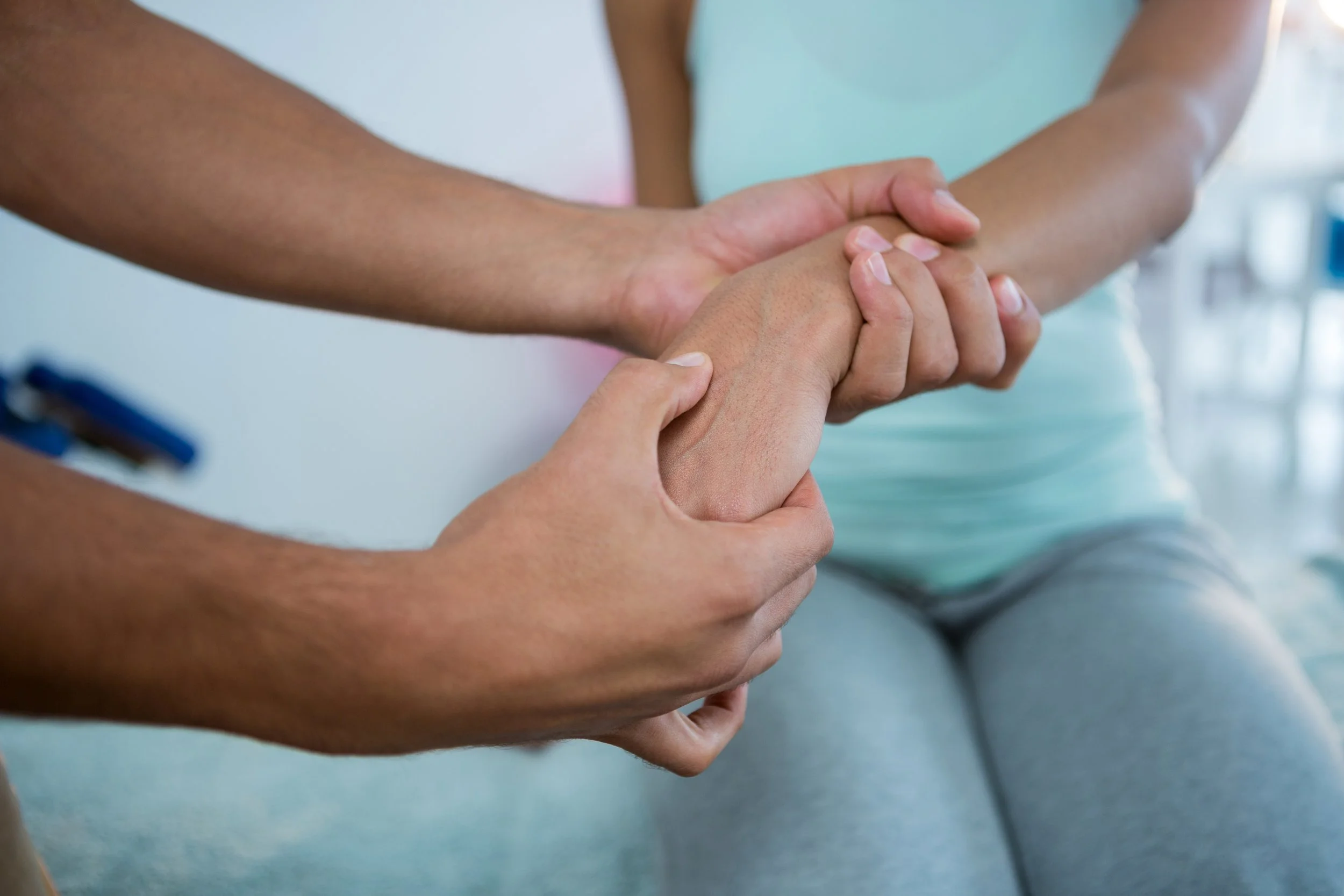Knee Pain: Patellofemoral Pain Syndrome
/Patellofemoral pain syndrome is one of the most common knee complaints of both the young active sportsperson and the elderly.
Patellofemoral pain syndrome is the medical term for pain felt behind your kneecap, where your patella (kneecap) articulates with your thigh bone (femur). This joint is known as your patellofemoral joint
Patellofemoral pain syndrome, is mainly due to excessive patellofemoral joint pressure from poor kneecap alignment, which in time, affects the joint surface behind the kneecap (retropatellar joint).
What Causes Patellofemoral Pain Syndrome?
Your patella normally glides up and down through the femoral groove. As your knee is bent, pressure between your kneecap and the groove increases.
This retropatellar pressure is further increased if the patella does not ride normally through the groove, but “mistracks”, meaning it travels more to one side, making it rub against the femur.
Repeated trauma causes an increase in your retro patellar joint forces, which can lead to kneecap pain, joint irritation and eventually degeneration of your patella joint surface.
The most common causes of patellar malalignment are an abnormal muscle imbalance and poor biomechanical control.
Aching kneecaps (patellofemoral pain) affect 25% of the population at some time in their lives but it is more common in athletes. The sports where patellofemoral pain syndrome is typically seen are those when running, jumping and landing or the squatting position is required.
Sports include running, tennis, netball, football, volleyball, basketball, skiing and other jumping sports.
Untreated patellofemoral pain syndrome can also predispose you to patellar tendonitis.
What Causes a Muscle Imbalance?
Your quadriceps (thigh) muscles attach to the patella and through it to the patella tendon, which attaches to the top of your shin.
If there is a muscle imbalance between the quadriceps muscles: vastus lateralis (VL), which pulls your patella up and outwards, and the vastus medialis oblique (VMO), which is the only quadriceps muscle that pulls your kneecap up and slightly in, then your patella will track laterally in the groove.
Common reasons for a weak vastus medialis oblique (VMO) include knee injury, post-surgery, swelling or disuse.
The longstanding tightness of your lateral knee structures (lateral retinaculum, VL, and ITB) will encourage your kneecap to drift sideways over time. Especially, if your VMO is also weak.
Hip muscles have been shown in the research to be very important in the control of your thigh. Poor buttock muscle control allows your knee to roll in and apply a relative lateral displacement of the the patella. Most successful rehabilitation programs require assessment and correction of your hip and buttock muscle control.
Patellofemoral pain syndrome is more common during adolescence, because the long bones are growing faster than the muscles, tendons and ligaments, putting abnormal stresses on the joints. Active children who do not stretch the appropriate muscles are predisposed to patellar malalignment.
What Biomechanical Issues Cause Patellofemoral Pain Syndrome?
Poor foot posture (eg flat feet) and weak hip control muscles can both allow your knee to abnormally twist and result in a lateral deviation of your patella.
When poor biomechanics are repeated with each step of your walking or running pattern that poor habit repeatedly traumatises your patellofemoral pain.
What are the Symptoms of Patellofemoral Pain Syndrome?
The onset of your kneecap pain is normally gradual rather than traumatic.
Patellofemoral pain symptoms are normally noticed during weight bearing or jarring activities that involve knee bending.
Stairs, squatting, kneeling, hopping, running or using stairs are commonly painful. As your patellofemoral pain syndrome progresses your knee will become painful while walking and then ultimately even at rest.
You can also experience kneecap pain when you are in sustained knee bend eg. sitting in a chair. A nickname for this condition is “theatre knee”.
Patellofemoral Pain Syndrome Treatment
Researchers have confirmed that physiotherapy intervention is a very effective short and long-term solution for kneecap pain.
Approximately 90% of patellofemoral syndrome sufferers will be pain-free within six weeks of starting a physiotherapist guided rehabilitation program for patellofemoral pain syndrome.
For those who fail to respond, surgery may be required to repair associated injuries such as severely damaged or arthritic joint surfaces.
The aim of treatment is to reduce your pain and inflammation in the short-term and then, more importantly, correct the cause to prevent it returning in the long-term.
There is no specific time frame for when to progress from each stage to the next. Your injury rehabilitation will be determined by many factors during your physiotherapist’s clinical assessment.
You’ll find that in most cases, your physiotherapist will seamlessly progress between the rehabilitation phases as your clinical assessment and function improves. It is also important to note that each progression must be carefully monitored as attempting to progress too soon to the next level can lead to re-injury and the frustration of a delay in your recovery.
Phase 1 - Injury Protection: Pain Relief & Anti-inflammatory Tips
As with most soft tissue injuries the initial treatment is - Rest, Ice and Protection.
(Active) Rest: In the early phase your best to avoid all activities that induce your kneecap pain.
Ice is a simple and effective modality to reduce your pain and swelling. Please apply for 20-30 minutes each 2 to 4 hours during the initial phase or when you notice that your injury is warm or hot.
Protection: Your physiotherapist will normally apply kinesiology supportive taping or similar to help relieve your pain and commence your patellofemoral joint realignment phase. The patellofemoral taping is normally immediately effective in providing you with pain relief.
Your physiotherapist will utilise a range of helpful tricks including pain relieving techniques, joint mobilisations, massage, strapping and acupuncture to assist you during this painful phase.
Anti-inflammatory medication and natural creams such as arnica may help reduce your pain and swelling. Most people can tolerate paracetamol as a pain reliever.
Phase 2: Regain Full Range of Passive Motion
Your kneecap and knee must be able to glide through its full normal range of motion. Your physiotherapist will assess your motion and apply the necessary techniques to normalise your range of motion.
Phase 3: Restore Full Muscle Length
Your thigh, hamstring and calf muscles will require stretching as they are tight and are causing excessive tension or pressure on your kneecap. It is important to regain normal muscle length to improve your lower limb biomechanics.
Phase 4: Normalise Quadriceps Muscle Balance
In order to prevent a recurrence, your quadriceps muscle balance and its control should be assessed by your physiotherapist. In most instances, you will require a specific knee strengthening program.
Your physiotherapist will prescribe the best exercises for you.
Phase 5: Normalise Foot & Hip Biomechanics
Patellofemoral pain syndrome can occur from poor foot biomechanics (eg flat foot) or poor hip control.
In order to prevent a recurrence, your foot and hip control should be assessed by your physiotherapist. In some instances, you may require a foot orthotic (shoe insert) or you may be a candidate for the Active Foot Posture Stabilisation program.
Other patients may require a hip stabilisation program. Your physiotherapist will happily discuss what you require.
Phase 6: Normalise Movement Patterns
Kneecap pain commonly occurs from poor habits, whether they be an abnormal gait, jumping, landing, running or squatting technique. In order to prevent a recurrence, your walking pattern, jumping and landing technique, running style or squatting method should all be assessed and corrected as required.
Your physiotherapist will happily discuss what you specifically require.
Phase 7: Restore High Speed, Power, Proprioception and Agility
Most kneecap pain sufferers need to return to high speed or repetition activities, which place enormous forces on your knee. Your physiotherapist will guide you in your return to sports planning.
Balance and proprioception (the sense of the relative position of neighbouring parts of the body) are both known to be adversely affected by patellofemoral pain. To prevent a re-aggravation, both aspects need to be assessed and retrained.
Depending on what your sport or lifestyle entails, a speed, agility, proprioception and power program will be customised to prepare you for light sport-specific training.
Phase 8: Return to Sport
If you play sport and depending on the demands of your chosen sport, you may require specific sport-specific exercises and a progressed training regime to enable a safe and injury-free return to your chosen sport.
This article originally appeared on physioworks.com.au and was written by John Miller











![Self-regulation “control [of oneself] by oneself"](https://images.squarespace-cdn.com/content/v1/55563e14e4b01769086817cb/1542845645966-PO2HGKF5JLUBM45UIWQ3/wee-lee-790761-unsplash.jpg)



















